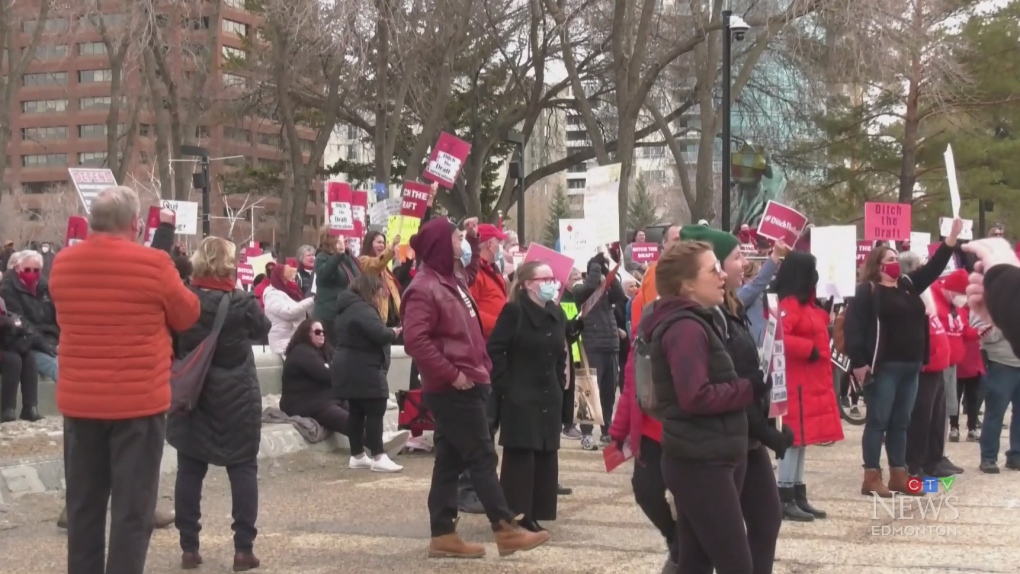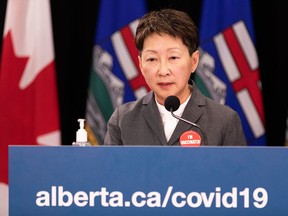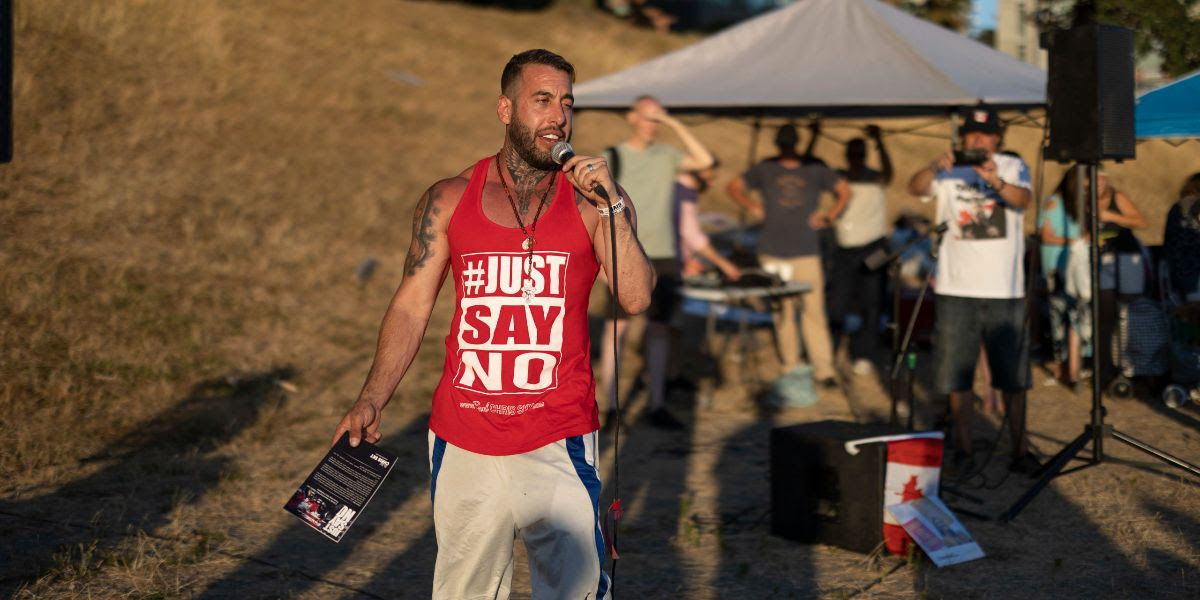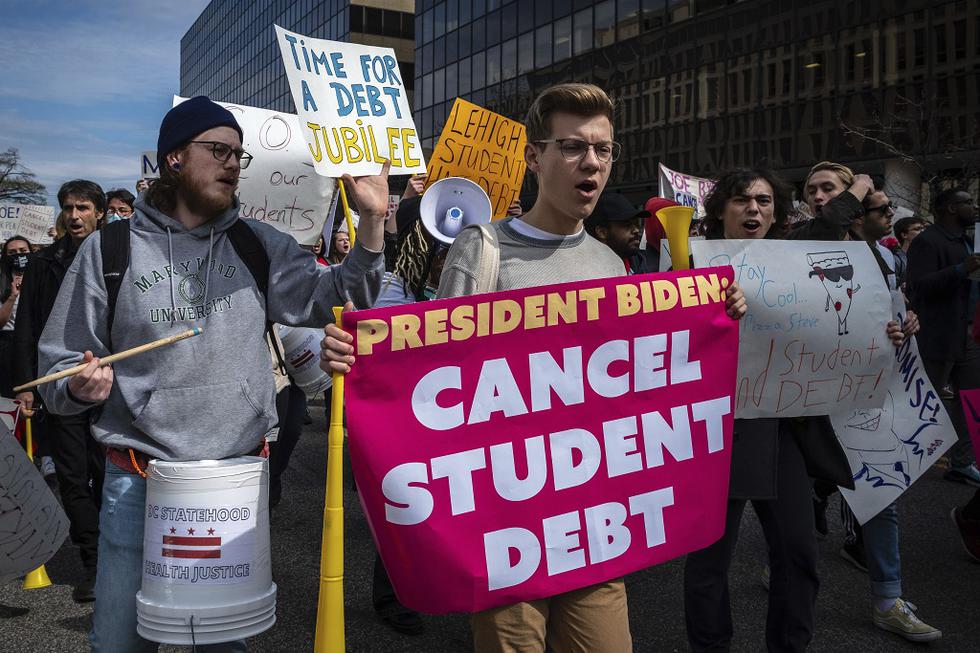The UCP may not fall as a result of its divisions. But after the result of the party’s leadership review vote is announced on May 18, it’ll have to be either all Jason Kenney or no Jason Kenney at all!

A house divided against itself cannot stand.
That goes for political parties too, I daresay.
And I’d say the United Conservative Party (UCP) led by Premier Jason Kenney is getting perilously close to the point where it’s so divided against itself, that if nothing changes, it’ll have to have to be folded up like a tent, thrown in the back of a blue pickup truck, and driven out of town!
It’s been apparent for a while there are serious divisions within the UCP – COVID deniers versus public health affirmers, Progressive Conservatives versus Wildrosers, neoliberals versus social conservatives, rural MLAs versus urban MLAs, possibly even climate change deniers versus “green conservatives,” to borrow a phrase from Preston Manning.
It looked for a spell as if the UCP – cobbled together in 2017 to restore the Progressive Conservative dynasty created by Peter Lougheed, who led the PCs to power in 1971 and created the big-tent model that kept them there until 2015 – might actually have cast out the demon of division animated in 2009 by the advent of the Wildrose Caucus in the Alberta Legislature, and its near miss with power in 2012.
Whether it was principally the superb campaign run by NDP Leader Rachel Notley or the divisions that bedevilled the Conservatives will forever be debated, but the rift in the conservative movement unquestionably contributed to the NDP victory in 2015 that ended 44-year PC Dynasty, and eventually the PC Party itself.
Kenney was anointed leader in a somewhat-tainted UCP vote in 2017. He seemed to lay to rest any doubts about the unity of the new conservative party, though, with his convincing electoral victory in 2019.
There were lots of Albertans, on the right and the left, who concluded then Kenney was the saviour of the right, who had resuscitated the indivisible Alberta Tory coalition of old.
But that ole Demon Division was not so easily cast out. Disagreement over how to respond to COVID seems to have been the catalyst, and Kenney’s own inclination to use polarization as a political tool certainly contributed.
That led to the party referendum on Kenney’s leadership now being conducted through a controversial – and itself divisive – mail-in vote, with allegations of cheating in the wind and Kenney himself calling members of his own party “lunatics” and implying that without him at the helm, bigotry would run wild in the UCP.
By the end of last week, no politically alert Albertan could miss the fact the UCP has become a public snake pit, with MLAs, party members and political staffers mud-rasslin’ on social media and in the press.
On Friday, Postmedia political columnist Rick Bell quoted eight sitting UCP MLAs publicly assailing their leader in a single column! In addition, he tossed in two Independent MLAs exiled from the UCP Caucus by Kenney for disloyalty to raise the total to 10.
Quoting Chestermere-Strathmore MLA Leela Aheer, Bell wrote: “With the NDP, people had concerns about certain policies. ‘With us, they’re concerned about corruption.’”
Airdrie-Cochrane MLA Peter Guthrie, from the party’s COVID-skeptical right, called Kenney “a federal Ottawa elitist.” Richard Gotfried, the moderate former Progressive Conservative from Calgary-Fish Creek, told Bell the premier is beholden to a small circle with “very little skin in the game in Alberta.” Same thing? Sure sounds like it.
Brian Jean, Kenney’s chief leadership rival in 2017 and victor in a recent by-election in Fort-McMurray-Lac La Biche on a platform of replacing the premier, made it clear that, this time, he won’t stand for cheating by Kenney’s supporters.
The same day, Kenney’s interim issues manager, Bryan Rogers, called the MLAs quoted in Bell’s column “just the same old crew” with a clip of clowns from an episode of The Simpsons.
The intramural mudslinging on social media got so bad and so public the Canadian Press reported on it.
“An internal feud battering Alberta’s governing party took a new twist after Premier Jason Kenney’s issues manager went on Twitter to compare Kenney’s United Conservative backbench critics to clowns,” wrote CP’s Dean Bennett in the deadly serious tones to which the national news service defaults.
Airdrie-East MLA Angela Pitt, another of the UCP MLAs quoted by Bell, took to Twitter to fire back: “This is exactly the kind of bullying and intimidation that happens every day from the Premier’s staff. MLAs provide dissenting opinions and they are ridiculed like clowns or called insane.”
Members of the UCP, which under Kenney has edged very close to the Christian right in Alberta, should be familiar with the metaphor about what happens when houses are divided against themselves.
It was famously used by Jesus of Nazareth himself in his memorably clever defence against Pharisaical accusations he’d been working on the sabbath by, among other things, casting out demons.
It was used again by the first Republican president of the United States, Abraham Lincoln, to describe the state of that Union in 1858, on the brink of the U.S. Civil War.
“I do not expect the Union to be dissolved – I do not expect the house to fall – but I do expect it will cease to be divided,” Lincoln added on June 6 that year at the Republican State Convention in Springfield. The Springfield in Illinois, that is, not the one in The Simpsons.
At the risk of channeling President Lincoln, I don’t expect the UCP to fall either, at least before the next general election.
But after the result of the party’s leadership review vote is announced on May 18, it’ll have to be either all Jason Kenney or no Jason Kenney at all!








